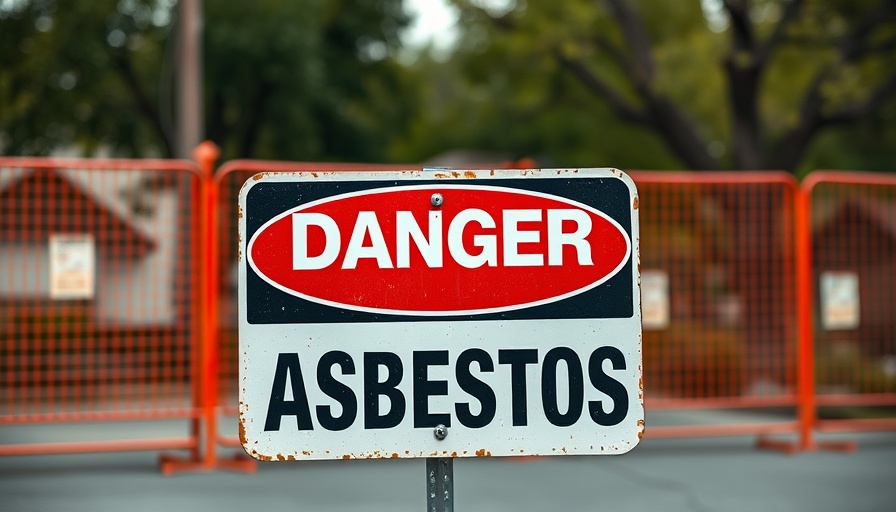
Understanding the Potential Halt on Asbestos Ban
The recent announcement by the Trump administration, revealing plans to reconsider the ban on chrysotile asbestos, raises significant health concerns among communities. Asbestos, a notorious carcinogen, has been known to cause severe illnesses, including various cancers and respiratory diseases. Every year, over 40,000 Americans succumb to asbestos-related diseases, underscoring the urgency of stringent regulations.
The Impact of Asbestos Exposure
Asbestos exposure has far-reaching implications on both individuals and public health systems. The Environmental Protection Agency (EPA) acknowledges that even with a phased-out ban, industries still utilized asbestos in brake linings and automotive parts. The delayed reactions to threats posed by asbestos have led to catastrophic health ramifications for those employed in sectors that still permitted its use.
Historical Context: The Asbestos Debate
The regulation of asbestos is not new in the U.S. It has been a contentious issue for decades. Under President Biden, the EPA made strides toward banning its usage, recognizing the carcinogenic properties that had already prompted over 50 countries to outlaw asbestos completely. The Trump administration’s reversal not only circumvents progressive regulation but also conveys a disheartening message regarding public health priorities.
Public Health vs. Economic Interests
As the EPA attempts to balance economic considerations against health impacts, a crucial question arises: Is economic growth worth compromising public health? Various industries have contested the ban, arguing it imposes financial burdens. However, health advocates highlight that the long-term economic costs of failing to address public health—like increased healthcare expenses and loss of productivity due to illness—will far exceed any temporary gains for businesses.
The Role of Advocacy in Policy Change
The push for stronger asbestos regulations is not solely about governmental mandates; grassroots advocacy plays a powerful role. Numerous groups continually push back against the influence of lobbying organizations that prioritize profit over safety. These advocates work to shine a light on the consequences of asbestos exposure, driving community efforts towards stricter enforcement and awareness campaigns.
Future Predictions: What Lies Ahead?
With the Trump administration’s signal to reconsider the asbestos ban, various public health analysts predict the future may include further delays to protective regulations. If the EPA follows through with its intent to reassess the ban, a stark possibility looms: prolonged exposure to asbestos, putting thousands at risk. Stakeholders from public health, legal, and industrial sectors need to engage in meaningful dialogue to come to common ground for the sake of worker safety.
Conclusion: Keeping the Conversation Alive
The decision to reconsider the asbestos ban spotlights the complexities of navigating public health policies in an economically driven environment. As discussions unfold, both the industry and the public must remain informed and engaged. Stakeholders need to act collectively to ensure that economic interests do not overshadow the imperative of safeguarding community health.
With technological advancements and innovations, monitoring workplace safety and health has more tools than ever, from AI in predictive analytics for risk management to advanced safety equipment in the workplace. Staying abreast of these developments can empower communities in advocating for the regulations they need.
 Add Row
Add Row  Add
Add 




Write A Comment